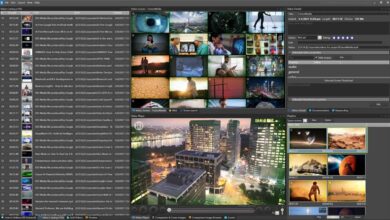From Pixels to Words: Embracing Image to Text Technology
Today, different organizations face the task of handling a big flow of documents and data. The back-office workforce often finds itself mired in repetitive tasks like entering data, organizing paperwork and emails, rectifying errors, tracking misplaced documents, and managing physical files. Amidst these challenges, decision-makers eagerly await crucial information. This is where the prowess of Optical Character Recognition (OCR) solutions comes into play, transforming machine-printed text from physical and electronic documents into accessible and actionable data.
Image-to-text converter, often referred to as Optical Character Recognition (OCR), is a technology that extracts text from images and converts it into an editable text format. It allows users to easily access and manipulate textual content embedded within images, such as scanned documents, photos, and screenshots.
What is OCR Technology
Optical Character Recognition also known as OCR. This is a technology for image to text converter. Known alternatively as text recognition, OCR has evolved significantly, especially as organizations seek efficient ways to manage and automate data capture from an ever-growing volume of documents. This technology is adept at extracting data from scanned documents and PDFs. Top-tier OCR solutions leverage artificial intelligence (AI) and machine learning, enabling them to interpret data from various document types and formats quickly and accurately.
Importance:
imagetotexttools.com plays an important role in various aspects of our lives, including:
- Accessibility: Converts physical documents like contracts and handwritten notes into digital formats, making them accessible to people with disabilities and facilitating easy sharing.
- Productivity: Automates data entry by extracting text from invoices, receipts, and business cards, saving time and effort.
- Storage and preservation: Digitizes old documents and photos, ensuring their long-term preservation and easy access.
- Research and analysis: Enable analysis of textual data within images, supporting research in a variety of fields.
The Mechanics of OCR Technology
At its core, OCR technology transforms physical document data into actionable digital information. The OCR process involves several key steps:
- Image Acquisition: OCR software first examines scanned images or digital documents.
- Preprocessing: This step involves de-skewing, de-speckling, and cleaning up the images to optimize them for text recognition.
- Text Recognition: The software identifies and interprets the text on the documents.
- Postprocessing: Finally, the recognized text data is converted into a digital format, streamlining the manual data entry process that often hampers back-office operations.
Let’s explore these steps further. The process begins with converting physical documents into electronic format using devices like high-speed production scanners. The OCR software not only interprets characters on electronically submitted documents but also cleans scanned images for optimum accuracy. It analyzes these images, identifying characters and sometimes even the document’s structure to ensure comprehensive data capture. Using advanced algorithms, the software deciphers characters and converts them into ASCII code, usable by computer programs. OCR solutions typically provide a confidence score for the accuracy of the captured data, aiding users in decision-making.
Diverse Applications of OCR Technology
OCR technology has a wide array of applications across different business processes, such as:
- Invoice Processing: Extracting data like supplier names, invoice due dates, and amounts from invoices.
- Travel and Expense Management: Simplifying reimbursement processes by extracting data from receipt images.
- Lockbox Processing: Automating the capture of remittance details like account numbers and payment due dates.
- Sales Order Processing: Extracting customer order information for efficient fulfillment.
- Logistics: Data extraction from shipping-related documents.
- Big Data Initiatives: Unlocking data from physical documents for data modeling and forecasting.
- Records Management: Assisting in document indexing for repositories.
- Transportation Screening: Recognizing Passport and driver’s license numbers for travel and security screening.
The potential applications of OCR are virtually limitless, encompassing bank statements, contracts, employment applications, insurance claims, utility bills, and much more.
Advantages of OCR Technology
The adoption of OCR technology offers numerous benefits to organizations:
- Cost Reduction: Eliminates manual data entry and related errors, reducing back-office expenses.
- Faster Processing Times: Digitizing documents and automating data extraction accelerates back-office operations.
- Streamlined Workflows: Allows digital routing of documents based on predefined rules.
- Enhanced Customer Experience: High accuracy levels in data capture improve customer service.
- Business Continuity: Digital archiving safeguards critical information against physical damages.
- Improved Collaboration: Digital documents facilitate easier editing, searching, and access, enhancing collaboration.
Popular Applications:
- Online Converters: Free online tools like Imagetotext.info and Free Online OCR allow users to instantly upload images and extract text.
- Mobile apps: Apps like Google Lens and Microsoft Office Lens enable text extraction directly from smartphones and tablets.
- Software programs: Advanced OCR software like Adobe Acrobat Pro and ABBYY FineReader offer greater accuracy and customization options for professional use.
Future trends:
- Improved accuracy: With advances in machine learning, OCR technology is becoming increasingly accurate, even for handwritten text and complex layouts.
- Integration with other technologies: Integration with AI and natural language processing will enable deeper analysis of the extracted text and unlock new possibilities.
- Accessibility for diverse languages: Continued development will expand language support, making OCR accessible to a wider audience.
Important Notes:
- Accuracy: OCR accuracy depends on image quality, font type, and background complexity.
- Privacy: Be cautious when using online converters and ensure the security of your uploaded images.
- Accessibility: Not all OCR tools are accessible to people with disabilities. Choose solutions that offer features like screen reader compatibility.
Overall, image to text converters have become essential tools for digital transformation and information access. As technology continues to evolve, we can expect even more exciting applications in the future.
Selecting the Ideal OCR Solution
When choosing an OCR solution, it’s essential to partner with a leader in OCR technology, like onlineocr.net. This online service exemplifies the advancement in OCR technology, integrating cutting-edge software and scanners to deliver top-notch solutions. By leveraging OCR technology from providers like onlineocr.net, organizations can effectively manage their critical information.
The image to text converter technology encapsulated in OCR solutions offers a transformative approach to document management and data processing. Its vast applications and benefits make it an indispensable tool for organizations aiming to enhance efficiency and data accuracy.





